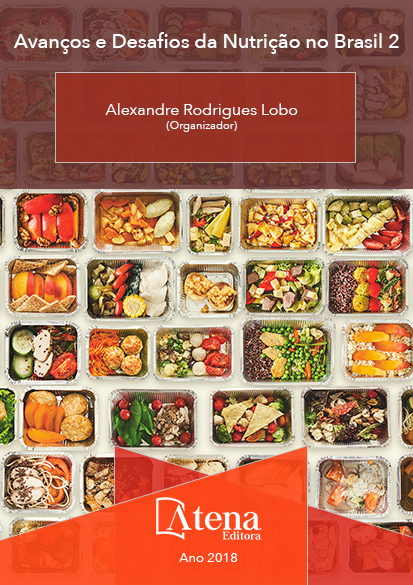
DETERMINAÇÃO DE COMPOSTOS FENÓLICOS E AVALIAÇÃO DA CAPACIDADE ANTIOXIDANTE DA PITANGA E DA ACEROLA PÓS-PROCESSAMENTO NA FORMA DE SUCO
O consumo de frutas é altamente
incentivado pelos guias alimentares, devido a
seus compostos bioativos antioxidantes, que
atuam na prevenção de doenças. A pitanga
(Eugenia uniflora L.) e a acerola (Malpighia
glabra L.) podem ser consumidas in natura e
na forma de suco, ademais, ambas contêm
compostos bioativos importantes para a saúde
humana. Diante disso, objetivou-se determinar
os compostos fenólicos totais e avaliar a
capacidade antioxidante dessas frutas na forma
de suco ao longo de diferentes tempos de
exposição, a fim de estimar uma cinética de perda
por fatores oxidantes pós-processamento. Para
a quantificação de polifenois totais foi utilizado
o método de Folin-Ciocalteu e para determinar
a atividade antioxidante foi utilizado o método
de estabilização do radical ABTS+•. As amostras
de suco das frutas foram armazenadas à
temperatura ambiente (20 °C) e sob refrigeração
(5 °C), e analisadas em diferentes tempos de
exposição. Os resultados foram expressos em
relação ao tempo e a temperatura de exposição.
Avaliando a capacidade antioxidante, observase
pequeno aumento em sua atividade, fato
que ocorreu em ambas as temperaturas de
exposição. Na determinação dos compostos
fenólicos, houve pequena diminuição a partir
do tempo inicial, nas temperaturas avaliadas.
A partir destes resultados, pode-se concluir
que o suco in natura de pitanga e acerola não
necessariamente precisam ser consumidos
imediatamente após o preparo, uma vez que as
perdas destes compostos nos tempos avaliados
foram pequenas, deixando precedentes para
mais estudos sobre esta temática.
DETERMINAÇÃO DE COMPOSTOS FENÓLICOS E AVALIAÇÃO DA CAPACIDADE ANTIOXIDANTE DA PITANGA E DA ACEROLA PÓS-PROCESSAMENTO NA FORMA DE SUCO
-
DOI: 10.22533/at.ed.94918021227
-
Palavras-chave: Eugenia uniflora L.; Malpighia glabra L.; Suco; Antioxidante; Compostos fenólicos.
-
Keywords: Eugenia uniflora L.; Malpighia glabra L.; Juice; Antioxidant; Phenolic Compounds.
-
Abstract:
Fruit consumption is highly
encouraged by dietary guides, due to its
bioactive antioxidant compounds, which act to
prevent disease. The surinam cherry (Eugenia
uniflora L.) and acerola (Malpighia glabra L.) can be consumed in nature and in the
form of juice and contains in its composition some important bioactive compounds.
The aim of this study was to determine the total phenolic compounds and to evaluate
the antioxidant capacity of these fruits in the juice form during differents exposure
times in order to estimate a loss kinetics by post-processing oxidant factors. For the
quantification of total polyphenols, the Folin-Ciocalteu method was used and the ABTS
radical scavenging assay was used to determine the antioxidant activity. Fruit juice
samples were stored at room temperature (20 °C) and under refrigeration (5 °C), and
analyzed at different exposure times. The results were expressed in terms of time and
temperature of exposure. Evaluating antioxidant capacity it was observed an increase
in its activity, it actually occurred in both exposure temperature. For the determination of
phenolic compound, there was a small decrease from the initial time for both samples
left at local temperature as for the samples under refrigeration. Therefore, from the
results obtained, it can be concluded that fruit juice in nature of surinam cherry and
acerola not necessarily need to be eaten immediately after its preparation, since for
these fruits losses of these compounds in the evaluated times were small, leaving
precedent for further studies on this topic.
-
Número de páginas: 15
- Patrícia Weimer


